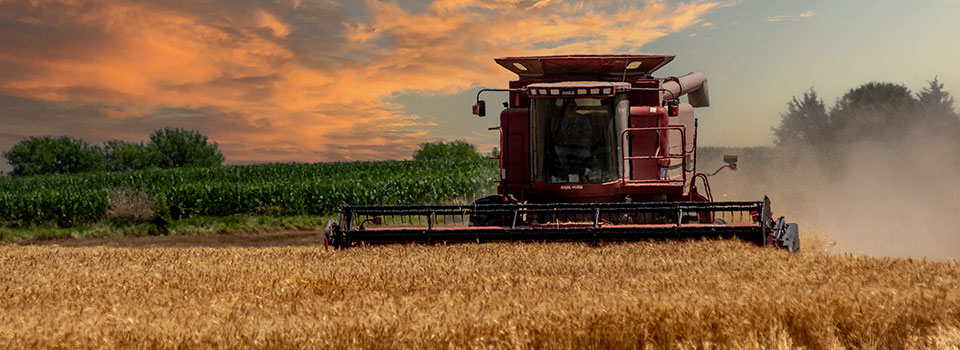
A group of researchers that includes K-State agronomist Romulo Lollato has challenged current methods of estimating yield potential of many farm-grown crops.
Study calls for new approach to estimate crop yield potential, gaps
K-State agronomist says farmers could sustain higher yields and maintain profitability
At a glance: A Kansas State University agronomy professor is part of an international team that is calling for a new approach to estimate crop yield potential and gaps – information that is critical in planning how to meet the world’s growing demand for food.
More information: Romulo Lollato, 785-477-4644, lollato@ksu.edu
Related: K-State Department of Agronomy | Kansas Wheat Variety Guide | Journal Article: Statistical approaches are inadequate for accurate estimation of yield potential and gaps at regional level
April 9, 2025
By Pat Melgares, K-State Research and Extension news service
MANHATTAN, Kan. – A Kansas State University agronomy professor is part of an international team that is calling for a new approach to estimate crop yield potential and gaps – information that is critical in planning how to meet the world’s growing demand for food.
Romulo Lollato said the research will challenge conventional ways of predicting yields for many farm crops, which could have implications regarding future policies related to agricultural commodities.
The study was published online April 8 in the journal Nature Food. The article is titled, ‘Statistical approaches are inadequate for accurate estimation of yield potential and gaps at regional level.’
“We defended a method that is ‘bottoms-up’ in that it considers the yield potential of current crop varieties, predominant local agricultural soils in each region of the country, cropping system and sequences that our growers currently have, and long-term local weather data,” Lollato said.
For context, Lollato said that wheat grown after wheat in Kansas has a higher yield potential compared to wheat that is double-cropped after soybeans.
“While this is one example that is clear to growers in the region, past projections of yield potential have surprisingly not accounted directly for differences such as this, or other differences that are accounted for in an approach that considers the local context,” Lollato said.
“At a local level, this is important because we demonstrated that there is a large yield gap for wheat in Kansas. In other words, our current weather and soils, combined with current varieties’ yield potential, are substantially greater than what our farmers are currently harvesting. We showed that current wheat yields (averaging 40-45 bushels per acre) could be sustained at 60-65 bushels per acre while still being profitable.”
Beyond the higher-level implications of the study, Lollato said that this large yield gap could be reduced with improved management on the farm, such as selecting appropriate varieties, and being timely and accurate when using inputs.
University of Nebraska professor of agronomy Patricio Grassini said the research is important because “we are in a race to feed the world and to try to feed the population with the available agricultural land that we have.
In the United States, he noted, current statistical models tend to rely too heavily on best-case scenarios – meaning, the most productive counties with the most fertile soils in a year with the most favorable weather. The methods also extrapolate a single yield potential across large regions with a wide diversity of climates and soils that likely would produce a similarly wide range in yield potential.
“Therefore, if you use that year as a reference, you are going to be overestimating your production potential because the best county with the best soils in the best year doesn’t really represent your average climate or your most typical soil across the state,” Grassini said.
Lollato and Grassini both said the study’s findings may create some controversy because it challenges what was once previously thought to be an accurate measure of crop yield potential.
“Controversy is good for science and agriculture as a whole since this is how we move the needle on different disciplines,” said Lollato, whose primary involvement in the research was to lead the estimates of yield potential for winter and spring wheat grown in the Great Plains of the U.S.
“This paper will create controversy because those whose statistical methods we are challenging also were researchers who likely had good and true intentions when developing them. Now, we are challenging those methods with a method that accounts for the local context where farmers grow crops.”
Grassini said the approach recommended by the team should better capture yield gaps, which “can help identify regions with largest room to increase crop production, which, in turn provides a basis to orient agricultural research and development programs.”
“This is a call to set the record straight because if we are going to use this information to inform policy and our investments, we better make sure that the information is sound and has been validated,” Grassini added.
The research team includes agronomists from the University of Nebraska, Kansas State University, Iowa State University and a collaborator at the French Agricultural Research Centre for International Development.
“Most of the research I do in my program is focused on finding ways that Kansas wheat farmers can increase production, and to be more profitable and sustainable,” Lollato said. “In other words, we try to learn what we can change on the farm to achieve these goals. This was a project that, while more theoretical, also had an applied scope since its findings can help shape policy and research/development investments for Kansas wheat growers.”
***

K‑State Research and Extension is a short name for the Kansas State University Agricultural Experiment Station and Cooperative Extension Service, a program designed to generate and distribute useful knowledge for the well‑being of Kansans. Supported by county, state, federal and private funds, the program has county extension offices, experiment fields, area extension offices and regional research centers statewide. Its headquarters is on the K‑State campus in Manhattan. For more information, visit www.ksre.ksu.edu. K-State Research and Extension is an equal opportunity provider and employer.